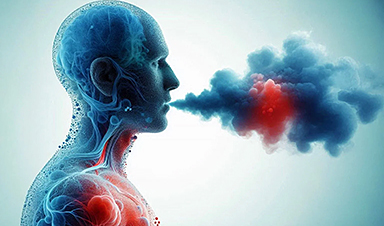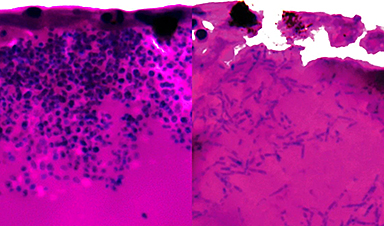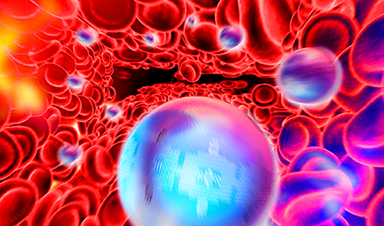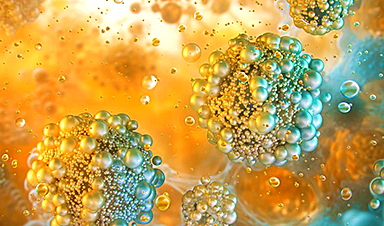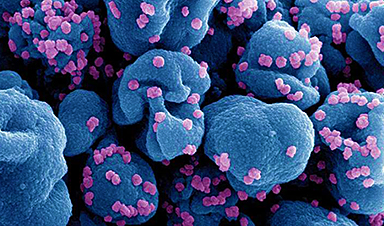Most health professionals lack a clear understanding of how body fat is lost, often subscribing to misconceptions like fat converting to energy or muscle.
The truth is, fat is actually broken down into carbon dioxide and water, with the majority of the lost fat being exhaled as carbon dioxide. This insight is crucial for understanding the real mechanics behind weight loss and dispelling common myths.
Unveiling Weight Loss Misconceptions
The world is obsessed with weight loss and fad diets, yet few people actually understand where fat goes when we lose weight.
Even among 150 doctors, dietitians, and personal trainers we surveyed, this knowledge gap was surprisingly common. The most widespread myth was that fat is converted into energy. However, this idea contradicts the law of conservation of matter, which all chemical reactions obey.
Some respondents believed fat transforms into muscle, which is impossible, while others assumed it exits through the digestive system. In reality, only three people in our survey got the correct answer. That means 98% of these health professionals couldn’t accurately explain how weight loss works.
So if fat isn’t turned into energy, muscle, or waste, where does it actually go?
The Surprising Science of Fat Loss
The correct answer is that fat is converted to carbon dioxide and water. You exhale the carbon dioxide and the water mixes into your circulation until it’s lost as urine or sweat.
If you lose 10 pounds of fat, precisely 8.4lb comes out through your lungs, and the remaining 1.6lb turns into water. In other words, nearly all the weight we lose is exhaled.
This surprises just about everyone, but actually, almost everything we eat comes back out via the lungs. Every carbohydrate you digest and nearly all the fats are converted to carbon dioxide and water. The same goes for alcohol.
Protein shares the same fate, except for the small part that turns into urea and other solids, which you excrete as urine.
The only thing in food that makes it to your colon undigested and intact is dietary fiber (think corn). Everything else you swallow is absorbed into your bloodstream and organs and, after that, it’s not going anywhere until you’ve vaporized it.
Understanding Energy and Weight Dynamics
We all learn that “energy in equals energy out” in high school. But energy is a notoriously confusing concept, even among health professionals and scientists who study obesity.
The reason we gain or lose weight is much less mysterious if we keep track of all the kilograms, too, not just those enigmatic kilojoules or calories.
According to the latest government figures, Australians consume 3.5kg of food and beverages every day. Of that, 415 grams is solid macronutrients, 23 grams is fiber and the remaining 3kg is water.
What’s not reported is that we inhale more than 600 grams worth of oxygen, too, and this figure is equally important for your waistline.
The 415 grams of carbohydrates, fats, protein, and alcohol most Australians eat every day will produce exactly 740 grams of carbon dioxide plus 280 grams of water (about one cup) and about 35 grams of urea and other solids excreted as urine.
An average 75kg person’s resting metabolic rate (the rate at which the body uses energy when the person isn’t moving) produces about 590 grams of carbon dioxide per day. No pill or potion you can buy will increase that figure, despite the bold claims you might have heard.
The good news is that you exhale 200 grams of carbon dioxide while you’re fast asleep every night, so you’ve already breathed out a quarter of your daily target before you even step out of bed.

Active Solutions to Weight Loss
So if fat turns into carbon dioxide, could simply breathing more make you lose weight? Unfortunately not. Huffing and puffing more than you need to is called hyperventilation and will only make you dizzy, or possibly faint. The only way you can consciously increase the amount of carbon dioxide your body is producing is by moving your muscles.
But here’s some more good news. Simply standing up and getting dressed more than doubles your metabolic rate. In other words, if you simply tried on all your outfits for 24 hours, you’d exhale more than 1,200 grams of carbon dioxide.
More realistically, going for a walk triples your metabolic rate, and so will cooking, vacuuming, and sweeping.
Metabolizing 100 grams of fat consumes 290 grams of oxygen and produces 280 grams of carbon dioxide plus 110 grams of water. The food you eat can’t change these figures.
Therefore, to lose 100 grams of fat, you have to exhale 280 grams of carbon dioxide on top of what you’ll produce by vaporizing all your food, no matter what it is.
Any diet that supplies less “fuel” than you burn will do the trick, but with so many misconceptions about how weight loss works, few of us know why.
Written by:
- Ruben Meerman, Assistant scientist, UNSW Sydney
- Andrew Brown, Professor and Head, School of Biotechnology and Biomolecular Sciences, UNSW Sydney
Adapted from an article originally published in The Conversation.
News
AI Helped Scientists Stop a Virus With One Tiny Change
Using AI, researchers identified one tiny molecular interaction that viruses need to infect cells. Disrupting it stopped the virus before infection could begin. Washington State University scientists have uncovered a method to interfere with a key [...]
Deadly Hospital Fungus May Finally Have a Weakness
A deadly, drug-resistant hospital fungus may finally have a weakness—and scientists think they’ve found it. Researchers have identified a genetic process that could open the door to new treatments for a dangerous fungal infection [...]
Fever-Proof Bird Flu Variant Could Fuel the Next Pandemic
Bird flu viruses present a significant risk to humans because they can continue replicating at temperatures higher than a typical fever. Fever is one of the body’s main tools for slowing or stopping viral [...]
What could the future of nanoscience look like?
Society has a lot to thank for nanoscience. From improved health monitoring to reducing the size of electronics, scientists’ ability to delve deeper and better understand chemistry at the nanoscale has opened up numerous [...]
Scientists Melt Cancer’s Hidden “Power Hubs” and Stop Tumor Growth
Researchers discovered that in a rare kidney cancer, RNA builds droplet-like hubs that act as growth control centers inside tumor cells. By engineering a molecular switch to dissolve these hubs, they were able to halt cancer [...]
Platelet-inspired nanoparticles could improve treatment of inflammatory diseases
Scientists have developed platelet-inspired nanoparticles that deliver anti-inflammatory drugs directly to brain-computer interface implants, doubling their effectiveness. Scientists have found a way to improve the performance of brain-computer interface (BCI) electrodes by delivering anti-inflammatory drugs directly [...]
After 150 years, a new chapter in cancer therapy is finally beginning
For decades, researchers have been looking for ways to destroy cancer cells in a targeted manner without further weakening the body. But for many patients whose immune system is severely impaired by chemotherapy or radiation, [...]
Older chemical libraries show promise for fighting resistant strains of COVID-19 virus
SARS‑CoV‑2, the virus that causes COVID-19, continues to mutate, with some newer strains becoming less responsive to current antiviral treatments like Paxlovid. Now, University of California San Diego scientists and an international team of [...]
Lower doses of immunotherapy for skin cancer give better results, study suggests
According to a new study, lower doses of approved immunotherapy for malignant melanoma can give better results against tumors, while reducing side effects. This is reported by researchers at Karolinska Institutet in the Journal of the National [...]
Researchers highlight five pathways through which microplastics can harm the brain
Microplastics could be fueling neurodegenerative diseases like Alzheimer's and Parkinson's, with a new study highlighting five ways microplastics can trigger inflammation and damage in the brain. More than 57 million people live with dementia, [...]
Tiny Metal Nanodots Obliterate Cancer Cells While Largely Sparing Healthy Tissue
Scientists have developed tiny metal-oxide particles that push cancer cells past their stress limits while sparing healthy tissue. An international team led by RMIT University has developed tiny particles called nanodots, crafted from a metallic compound, [...]
Gold Nanoclusters Could Supercharge Quantum Computers
Researchers found that gold “super atoms” can behave like the atoms in top-tier quantum systems—only far easier to scale. These tiny clusters can be customized at the molecular level, offering a powerful, tunable foundation [...]
A single shot of HPV vaccine may be enough to fight cervical cancer, study finds
WASHINGTON -- A single HPV vaccination appears just as effective as two doses at preventing the viral infection that causes cervical cancer, researchers reported Wednesday. HPV, or human papillomavirus, is very common and spread [...]
New technique overcomes technological barrier in 3D brain imaging
Scientists at the Swiss Light Source SLS have succeeded in mapping a piece of brain tissue in 3D at unprecedented resolution using X-rays, non-destructively. The breakthrough overcomes a long-standing technological barrier that had limited [...]
Scientists Uncover Hidden Blood Pattern in Long COVID
Researchers found persistent microclot and NET structures in Long COVID blood that may explain long-lasting symptoms. Researchers examining Long COVID have identified a structural connection between circulating microclots and neutrophil extracellular traps (NETs). The [...]
This Cellular Trick Helps Cancer Spread, but Could Also Stop It
Groups of normal cbiells can sense far into their surroundings, helping explain cancer cell migration. Understanding this ability could lead to new ways to limit tumor spread. The tale of the princess and the [...]
